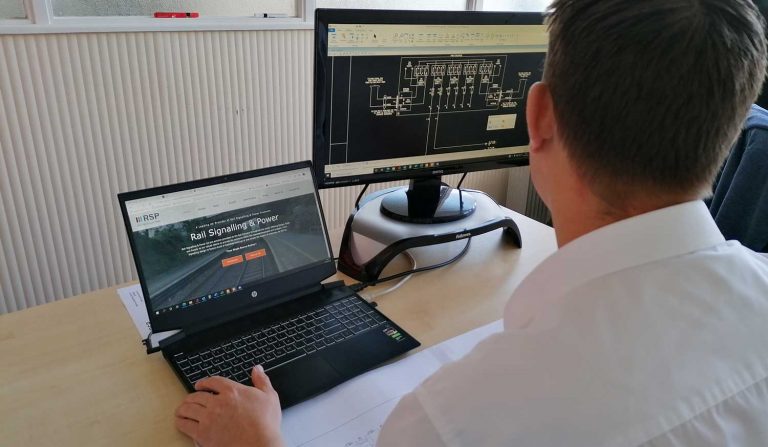Case Study: GRIP 4-8 Signalling Design
The GWR programme called for greater capacity, faster, frequent and longer train services, and improved stations, with Network Rail describing it as: ‘the biggest investment in the Great Western railway since Brunel built it more than 150 years ago. To accomplish the transformation of the Great Western Main Line between London & Oxford, all the new and existing signalling infrastructure along the route needed to be controlled from a new Oxford IECC workstation, located at the Thames Valley Signalling Centre. Four new Westlock Interlockings were planned, along with 4-Aspect Bi-Directional Signalling, to achieve 25KVac immunity and facilitate the new fleet of high-speed IEP electric trains.

The Project
Oxford Area Re-signalling Schere (OARS) Phase 1 – Great Western (GWR) Route Modernisation 2018
To accomplish the transformation of the Great Western Main Line between London & Oxford, all the new and existing signalling infrastructure along the route needed to be controlled from a new Oxford IECC Workstation, located at the Thames Valley Signalling Centre.
Four new Westlock Interlockings were planned, along with 4-Aspect Bi-Directional Signalling, to achieve 25KVac immunity and facilitate the new fleet of high speed IEP electric trains.
The role of RSP
RSP was selected to produce the GRIP 4-8 signalling design work for a significant section of the GWR scheme: Oxford Phase 1.
The Team
Signalling Designers, Signalling Design Verifiers, Signalling Principles Designer With Cre & Cem Roles. All IRSE Licenced and with extensive experience in planning, designing & managing complex signalling projects.
Scope of Works
Produced
- Axle Counter Evaluator Long Plans, Cable Core Plans & Schematics – 17 ACES & 351 Axle Counter Heads
- Location and REB Power & Air-Conditioning Calculations
- Signalling & Data Link Cable Schematic
- 5 Location Area Plans
- TFM & Data Link Schematics – 7 Westlock TIF Areas & 4 CIP Areas
Designed
- 7 Relocatable Equipment Buildings – NR Sizes 6, 7, 9
- 145 Location Cases – Full & Half-Size
- 14 Disconnection Boxes
Provided
- Passive Equipment Provision for Oxford Phase 2
- Commissioning Design Cover and Support
Standard Equipment Types
- AWS
- Data Link, Points, & Signal Modules
- Dorman & VMS Signals:
- 2, 3 & 4 Aspect
• Buffer Stop
• GPLS & Position Light
• Miniature, Standard & Junction Route Indicators - Patrolmans Lockouts
- Clamplock, Hy-Drive
- HW2121 & IBCL Points
- Thales Axle Counters
- TPWS
- 650, 110, 50 & 24V Power
The Grip Process
Grip 4 – Single-Option Development
RSP planned the core document requirements for the scheme, based of the NR Scheme Plans
Grip 5 – Detailed Designed
RSP produced the detailed design, including the equipment layouts, calculations and wiring diagrams.
Grip 6 – Construction Testing Commissioning
RSP worked with Siemens, Amey and NR test teams to ensure the project was installed and commissioned successfully.
Grip 7 – Scheme Handback
RSP incorporated the installation and testing comments into the final record designs and records to NR.
Grip 8 – Project Close-Out
RSP carried out a project review to ensure that lessons learned and good practices were implemented on future projects.
The Result
The Commissioning was carried out during a two-week blockade in July 2018. It involved the installation/alteration of 185 signals and 79 points, plus 351 new axle counters. RSP provided design support throughout this period and the area was successfully brought back into service with minimal test logs and no delays.
Comments: “a job brilliantly planned and superbly delivered.” Steve Hall Network Rail SPC Programme Manager’
Achievements Supplied
High quality, safety-conscious designs and expert advice DELIVERED Large volume of design work on time and within budget WORKED In partnership with several companies to achieve a positive outcome.
Contact us to find out how we can help your business today.
